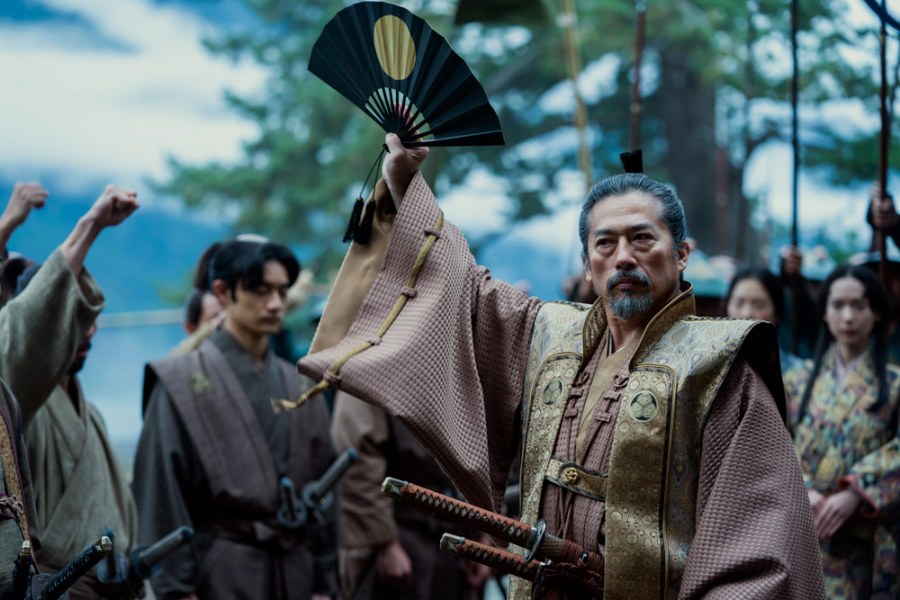Shogun, the big-bucks TV remake of a novel about an English sailor shipwrecked in feudal Japan, has won a record-breaking 18 Emmys. We meet Katie Yu, the production’s stills photographer – as she reveals, the job’s about much more than taking publicity portraits of actors.
Shogun, which is currently airing on Disney +, has taken the entertainment world by storm and has made history. Much of the dialogue is in Japanese, so it has become the first ‘majority non-English drama’ to win Emmy awards (like an oscar for TV shows).
It also marks the first time that Japanese actors, namely Hiroyuki Sanada (The Last Samurai, Westworld) and Anna Sawai, have won Emmys.
In brief, Shogun is based on a novel by James Clavell, which in turn is broadly based on the true story of Will Adams (John Blackthorne in the show). Adams was an English sailor who got shipwrecked in Japan around 1600, with civil war brewing. Initially held captive, he became the confidante of Tokugawa Ieyasu, a rich and ambitious samurai warlord (Lord Toranaga in the TV series).
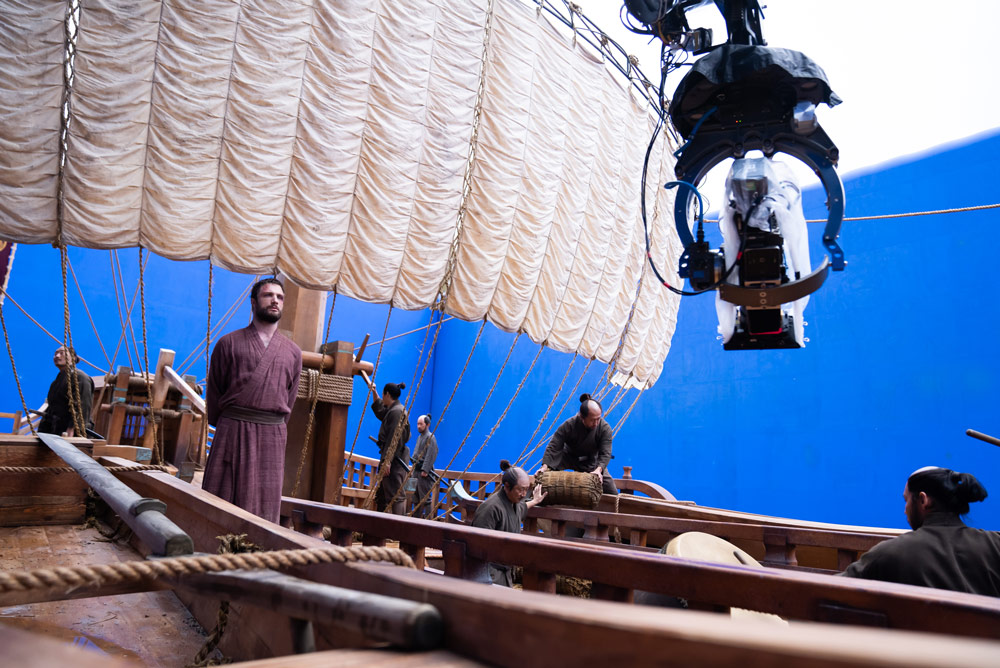
We won’t give the rest of the plot away, but it’s a gripping, epic story, and the new production has been widely praised for its emotional power, reverential attention to period detail and respect for Japanese culture.
Shogun’s cast includes some great western and Japanese actors, so being the stills photographer on set was always going to be a big responsibility.
The job went to Katie Yu, a seasoned stills shooter with a strong track record. Katie’s based in Canada, where much of Shogun was filmed, and looks back at her time as photographer on this hit TV series.

What is your background in stills photography – getting into stills photography on big productions such as Shogun must be tough and competitive, so how did you get your big break?
I took up photography as a hobby while I was in the film and TV programme in university. We would volunteer on each student’s short film projects, so I often shot their stills. It never occurred to me that stills photography was actually a job until I shadowed the camera department on a low-budget feature.
After graduation, I randomly met a filmmaker in need of a stills photographer for their short film. It was basically word of mouth when I was starting out. Low-budget projects were always in need of photographers before the days of digital cameras.
So how did you get the job on Shogun?
I was working on James Gunn’s Peacemaker when they offered me another show, but it required travelling to a different province in Canada. I couldn’t leave my senior cat alone so I had to decline. Serendipitously, FX soon offered me Shogun shortly after. My portfolio is mainly superhero, action and sci-fi.
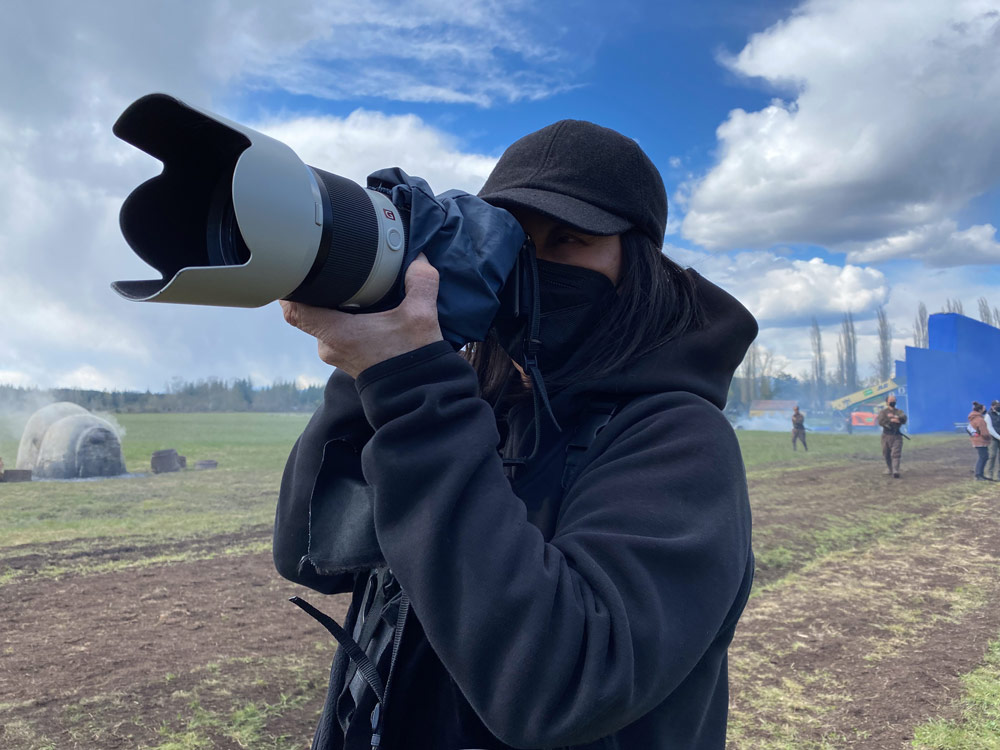
Historical dramas are very rare in Vancouver, where I am based, but when I was offered Shogun, I jumped at the opportunity knowing it would be visually stunning.
We understand there are two types of photographer on movies and TV shows, stills photographers and gallery photographers. Can you explain the difference?
I was hired as the official Unit Stills Photographer for Shogun. Not only do you photograph what’s being filmed, but also take shots behind-the-scenes. You need to shoot the empty sets, props and costumes, too.
For Shogun, it was a photographer’s dream. I could point my camera in any direction and there would always be something interesting to photograph. There was so much detail and texture all around.
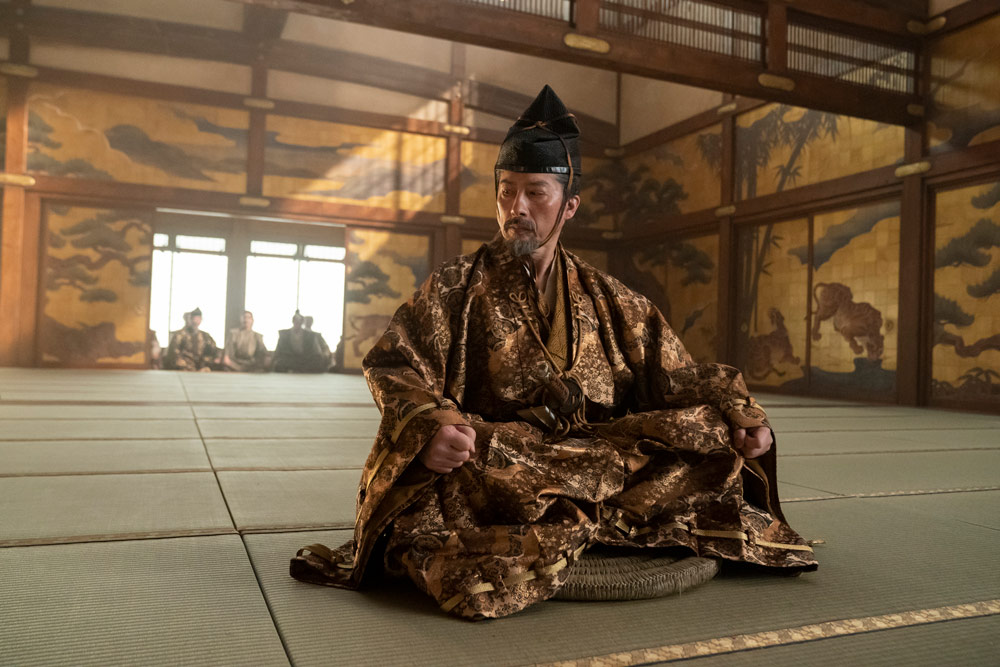
A gallery photographer, meanwhile, works with the studio’s marketing department and usually takes pictures of the actors away from the set – they tend to show up towards the end of the filming and set up separate photo shoots.
So, the unit stills photographers generally shoot while the actors are filming. When I’m shooting on set, it’s important to be stealthy so you don’t distract from the performances. In between set-ups or after the scene is completed, I sometimes ask to shoot portraits of the cast.
For instance, the shot of Lady Mariko (Anna Sawai) in court looking into my camera was shot after they cut, because I needed to be where the film cameras were placed.
It was a very important scene and the room was in perfect symmetry. I had to be quick because all the actors had been kneeling in the traditional Japanese way for quite some time.

What were the biggest challenges of working on Shogun?
I think the biggest challenge of working on Shogun was that it rained quite a lot, both natural and with rain towers. It was the year of a climate event called the Atmospheric River. One of my Sony camera bodies once malfunctioned in the middle of a scene due to the torrential rain.
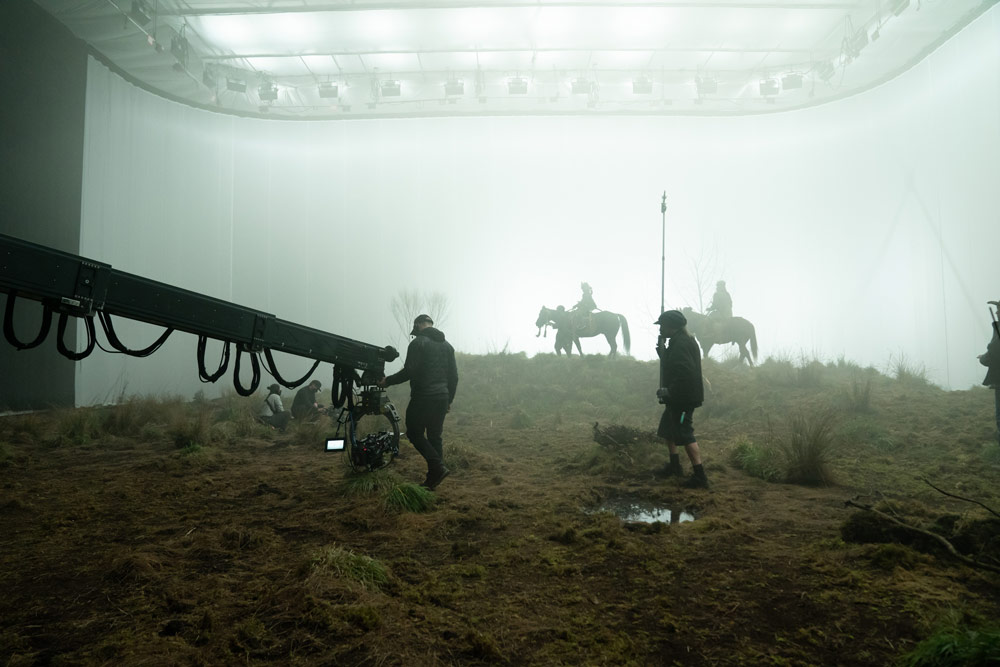
After every exterior shoot, I had to store my camera gear in a container with desiccant packs to dry it out. We did have sun on some days, however, and I don’t think I’ve ever seen so many rainbows in my life – it was a record year for rainbows.
The other, much smaller challenge was communication, as some of the Japanese cast didn’t speak English. There were interpreters, so it was fine, and the actors were very professional.
Still, I did learn some basic Japanese, as it’s still a culture based on politeness and respect – for example, shashin onegaishimasu, ‘can I please take a photograph.’
There was so much support from both the cast and crew to get the shots I needed. In particular, I can’t thank the Assistant Director team enough for their assistance helping wrangle the cast for my set-ups!
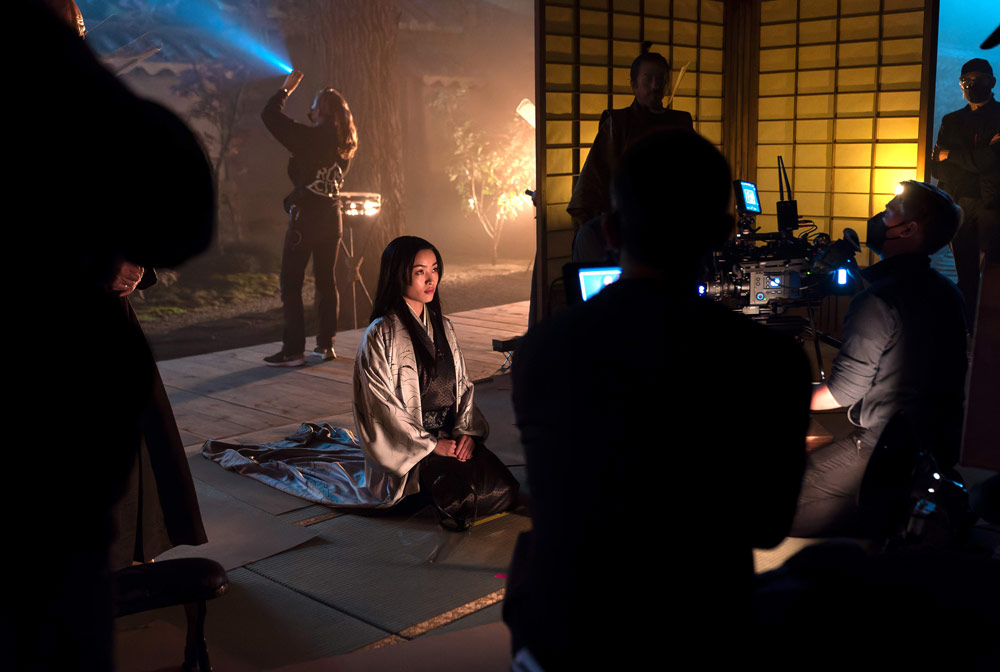
We can imagine that shooting on the set of Shogun was quite an intense experience, given the dramatic story
You really need to be cognisant of the emotional journey each cast member is going through during their performance. You have to know when you can break that ‘fourth wall’ to ask for a photo.
There were some very intense scenes in Shogun which were emotionally tough to shoot. You become attached to characters after working with them for several months. Watching their stories unfold was gut-wrenching and heartbreaking, yet absolutely breathtaking to watch first hand. I was really rooting for the cast.
Working on Shogun was the epitome of what you imagine working on a film set would be.
What camera bodies, lenses and lighting did you use for Shogun, and why?
I shot Shogun with two Sony A9’s and the Sony A7R IV. The A9’s are fantastic in low light while the A7R IV was used mostly during exterior scenes. Lens wise, I used multiple Sony zooms and primes – the GM 24-70mm, 70-200mm, 16-35mm, 90mm, 135mm and 200-600mm.
Many scenes were so whisper quiet that you could hear the motor of the 70-200 GM I, so I would shoot only with the quieter prime lenses. I then swapped to Sony’s much quieter 70-200 GM II lens when it came out during filming.

Any lighting set-ups I did were done with bounce boards and whatever lighting was already in place. When it comes to editing, generally, as a stills photographer, you shoot, do a general edit of your day’s work and then upload it – but it depends on who you are working with.
I use Photo Mechanic for an initial cull, then switch to Lightroom. I like to colour correct to match the ‘look’ of the show, though Shogun didn’t request this.
Do you have any tips for ‘wannabe’ stills photographers keen to break into the profession?
I used to tell people to look for work on short films or music videos to build their portfolio. But I think the digital era has made the position of stills photographer much more competitive.
One thing I strongly recommend, even if you just want to shoot on set, is to know how to shoot with strobes. You may be asked to do a lighting set-up with the art department sometimes. You can also build your portfolio with creative lighting portraits which will give the employer an idea of your creativity.
Shogun is a 10-part series available now on Disney + for UK viewers. Katie Yu would like to thank Kimberly Diehl at FX and Kristen E. Press at Disney. Additional thanks to Stewart Sy, Pro Support, Sony of Canada.
Further reading
Best cameras for portraits and portrait photography
The best Sony cameras in 2024
The best Sony lenses in 2024

